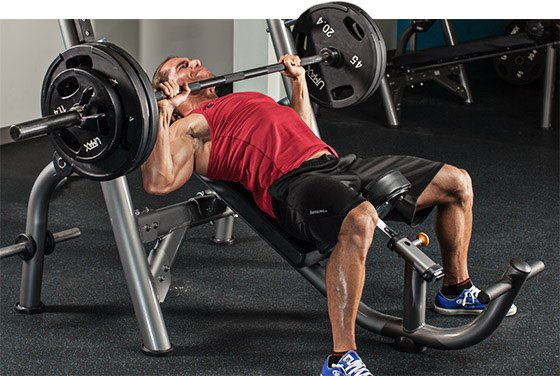
To the ancient Greeks the ideal male form—as imagined in sculptures, paintings, and drawings— was usually made with a wide chest, broad shoulders, and a thick back placed upon a slim waist. The legs were muscular, but not overly huge. Everything was balanced and proportionate. The Greeks believed in these proportions for three reasons: to perform athletically and in battle, to live a long time with good health, and to be attractive in order to pass along genetics..
The Greeks didn't have health clubs with fancy machines. Although there is debate whether they actually invented the barbell, plenty of evidence has been found that ancient Greeks picked up heavy objects and walked or ran with them, and even threw them.
You don't have to walk around with a giant rock to attain the Greek ideal. Instead, make big compound exercises like squats, deadlifts, presses, pulls, and weighted lifts the backbone of your training program. Those movements are designed to improve your size, strength, symmetry, and overall function.
Think back to the last time you did a workout. Did you really give it your all? Many people hit the gym and just go through the motions. They may spend more time taking selfies, texting, or finding the right music than actually lifting. You can't expect great results if you half-ass your workout.

The next time you have a date with the iron, dial it in and focus. Feel your muscles squeezing at the top of each rep. Extra focus can increase your intensity and mean the difference between mediocre and superior results.
Think back to the last time you did a workout. Did you really give it your all? Many people hit the gym and just go through the motions. They may spend more time taking selfies, texting, or finding the right music than actually lifting. You can't expect great results if you half-ass your workout.

The next time you have a date with the iron, dial it in and focus. Feel your muscles squeezing at the top of each rep. Extra focus can increase your intensity and mean the difference between mediocre and superior results.



No comments:
Post a Comment